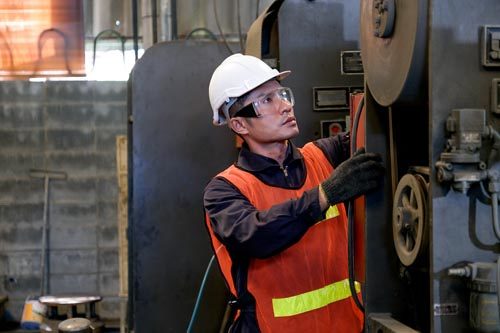SAM and hazardous energy
Spot the hazard, assess the risk, make the change – these are common risk mitigation practices for employees working in and around the manufacturing production process. But what about the energy that can’t be seen?

Responding is Daniel Garstang, vice president of safety consulting, SEAM Group, Beachwood, OH.
It is said that “complacency is the enemy of safety.” The challenge of every safety leader is to ensure employees and contractors are aware, engaged and respect the energy with which they’re working.
In our analyses and experience, two factors differentiate the majority of serious injuries and fatalities, or SIFs, and near misses from other incidents: the level of energy in proximity to a worker and the ability to identify, respond and make necessary changes to ensure their safety.
If industry and safety professionals were to start with a clean slate – no Heinrich-Bird incident pyramid, no catchall “total recordable injury rate,” no assumed employee “unsafe acts” – the first variables would be hazard recognition along with the amounts and locations of hazardous energy.
We’re convinced that most successful endeavors to save lives and quality of life begin with a comprehensive canvassing of facilities for the sources of potentially lethal energy. The process of spotting a hazard, assessing the risk and making the change – or SAM – is a critical core competency at all levels of an organization.
Hazard recognition as a process is not new. Even in most compliance-oriented systems, risk assessments such as SAM are conducted for select mandated programs.
Over the past 30 years, I have traversed various careers, from military, police, mineral extraction, hydrocarbon extraction, transport and logistics to energized assets. I can say one competency alone, at my core, has allowed a more straightforward traverse: the competency and real-time application of SAM.
Spotting hazards, understanding their potential, assessing the risk, and the ability to make the proactive and reactive changes needed is a safety skill that gets better with continued application.
Some of you will say, “I already do this,” “We complete a Job Safety Analysis” and “We do hazard identification.”
My simple challenge would be: Do your people know the SAM process at their core? Is it part of their DNA? Do they drive their vehicles thinking about SAM? Do they walk through your workshop thinking about SAM? Do they understand SIF hazards and all that they entail? Are they aware of the energy that is staged, invisible and at levels that would release industrial loads if inadvertently triggered?
The process of SAM is a core competency for anyone who needs to ensure the process of connecting the thinking and the doing is achieved. It’s difficult for a safety leader to make everyone aware of all hazards and combinations that context provides, despite all our efforts. Rarely can a staff member recall all the training provided or have the underpinning knowledge to anchor the learning, too.
When we can teach our people to spot hazards, understand their severity and impact, and make proactive and reactive changes, they will have a higher probability of going home safe every day.
Editor's note: This article represents the independent views of the authors and should not be construed as a National Safety Council endorsement.
Post a comment to this article
Safety+Health welcomes comments that promote respectful dialogue. Please stay on topic. Comments that contain personal attacks, profanity or abusive language – or those aggressively promoting products or services – will be removed. We reserve the right to determine which comments violate our comment policy. (Anonymous comments are welcome; merely skip the “name” field in the comment box. An email address is required but will not be included with your comment.)

